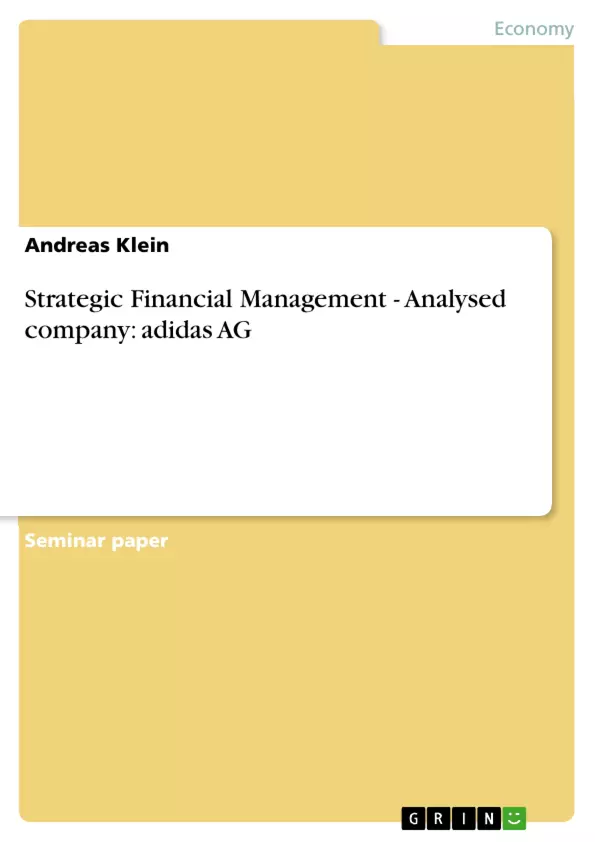The valuation of a company is fundamental for financial and strategic decision making. One of the first structured approaches to assess the value of a company was the so-called Shareholder Value Analysis developed by Rappaport (1986). Heidentified value drivers in three different areas, namely Finance, Investment and Business. The theory says that improvement of these value drivers leads directly to an increase in shareholder value (Spencer and Francis 1998).
In this assignment, the company to be evaluated, namely adidas, will be presented and then analysed concerning the value delivery in recent years. After that, different methods of company valuation will be explained and applied to adidas. The assignment will finish with a critical appraisal of the findings.
Inhaltsverzeichnis (Table of Contents)
- Introduction
- Value delivery over the past 5 years
- Development of the equity value over the last 12 months
- Equity valuation
- Net Asset Value
- Price/Earnings Ratio
- Discounted Cash Flow
- Critical Appraisal & Conclusion
Zielsetzung und Themenschwerpunkte (Objectives and Key Themes)
This assignment aims to evaluate the value delivery of adidas AG in recent years by employing different valuation methods. It analyzes the company's financial performance, its shareholder value creation, and applies established valuation techniques to assess the company's worth. The objective is to provide a comprehensive assessment of adidas' financial standing and its attractiveness as an investment.
- Shareholder Value Analysis
- Valuation of a company
- Value drivers in finance, investment, and business
- Total Shareholder Return (TSR) analysis
- Equity valuation methods
Zusammenfassung der Kapitel (Chapter Summaries)
- Introduction: This chapter introduces the concept of Shareholder Value Analysis, highlighting the importance of company valuation for financial and strategic decision-making. It also provides a brief overview of adidas AG, mentioning its acquisition of Reebok and its share split.
- Value delivery over the past 5 years: This chapter focuses on the Total Shareholder Return (TSR) of adidas, calculating the return generated for shareholders through dividends and capital appreciation. It presents data on dividends paid by adidas from 2002 to 2006 and analyzes the share price development of the company during the same period.
Schlüsselwörter (Keywords)
The main keywords and focus topics of this work include company valuation, Shareholder Value Analysis, Total Shareholder Return (TSR), dividend policy, capital appreciation, equity valuation methods, Net Asset Value, Price/Earnings Ratio, Discounted Cash Flow, and adidas AG.
- Arbeit zitieren
- Andreas Klein (Autor:in), 2007, Strategic Financial Management - Analysed company: adidas AG, München, GRIN Verlag, https://www.grin.com/document/78328



